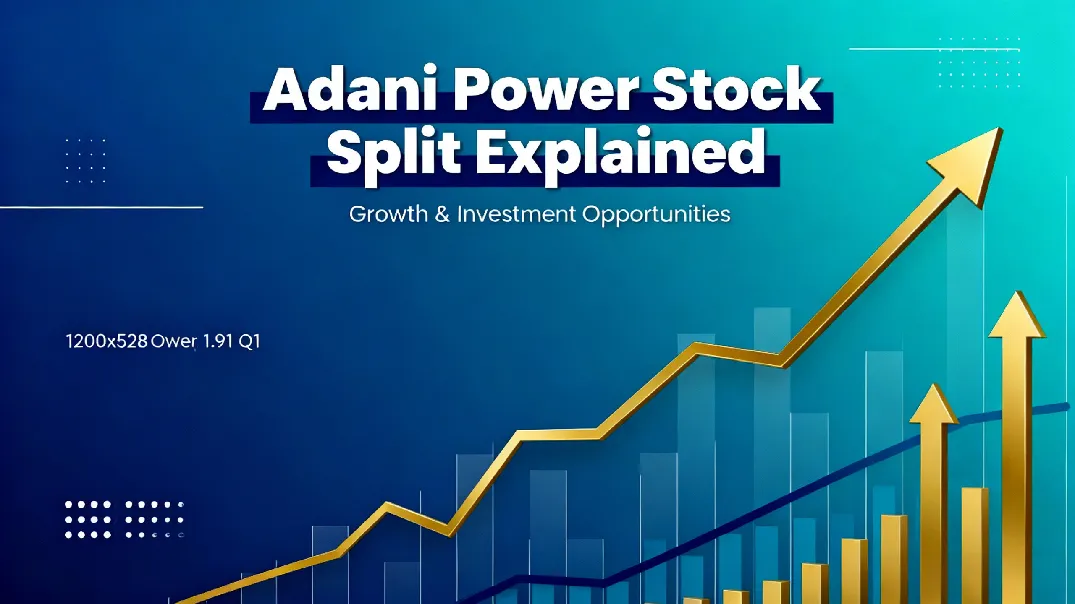What is a Stock Split?
A stock split occurs when a company divides its existing shares into multiple new shares. The total value of the investment remains the same, but the number of shares increases, reducing the price per share. For example, in a 1:5 stock split, if you own 1 share worth ₹500, after the split you will own 5 shares worth ₹100 each. Your total investment of ₹500 remains unchanged.
Stock splits are common in companies whose share prices have risen significantly over time. The primary goal is to make shares more affordable for retail investors, increasing liquidity in the market.
Is XRP a Good Investment in 2025? Deep Analysis, Forecasts & Risks
Why Companies Like Adani Power Split Their Stock
There are several reasons why companies opt for stock splits:
- Improved Liquidity: Lower share prices attract more investors, boosting trading volume.
- Psychological Affordability: Investors perceive lower-priced shares as more accessible, which can stimulate demand.
- Wider Investor Base: A split enables smaller investors to buy shares, expanding the shareholder base.
- Market Signaling: A stock split often signals confidence from the company’s management about future growth.
For Adani Power, the stock split aims to make the shares more accessible to retail investors while maintaining the company’s market capitalization.
Impact of Stock Split on Investors
Many investors wonder if a stock split affects the intrinsic value of their holdings. Here’s what happens:
- Share Price Adjustment: Post-split, the share price reduces proportionally to the split ratio.
- Number of Shares: Investors receive additional shares in proportion to the split ratio.
- Total Investment Value: Remains unchanged immediately after the split.
- Potential for Growth: Lower-priced shares may attract more buyers, potentially increasing demand and future price appreciation.
For example, if an investor holds 100 shares of Adani Power at ₹1,000 per share, a 1:5 split would convert these into 500 shares at ₹200 each. The total value remains ₹100,000, but the investor now holds more shares, potentially benefiting from increased liquidity and trading activity.
Short-Term vs Long-Term Effects
It’s important to differentiate between short-term market reactions and long-term investment impact:
- Short-Term: Stock splits often generate buzz and increased trading activity, which can temporarily boost prices.
- Long-Term: The company’s fundamentals, earnings, and growth prospects determine the actual investment value over time. A stock split does not create real wealth; it simply makes shares more accessible.
Common Misconceptions About Stock Splits
Many investors misinterpret stock splits as a positive signal that guarantees returns. Let’s clarify:
- Myth 1: A stock split increases the value of your investment.
Reality: The value remains the same immediately after the split. - Myth 2: Only good companies split stocks.
Reality: Companies of varying fundamentals perform stock splits; it is not an indicator of profitability. - Myth 3: Investors should rush to buy post-split shares.
Reality: Decisions should be based on company fundamentals, not stock splits alone.
How Investors Should Approach Adani Power’s Split
Here are practical tips for investors:
- Understand the Split Ratio: Check the official announcement for details on how many shares you will receive per existing share.
- Evaluate Company Fundamentals: Review Adani Power’s financial performance, revenue growth, debt levels, and future projects.
- Consider Your Investment Horizon: Stock splits are beneficial for long-term investors due to potential liquidity and price accessibility advantages.
- Avoid Short-Term Speculation: Market reactions can be volatile immediately after the split. Focus on long-term trends and company performance.
- Diversify Your Portfolio: Don’t rely solely on one stock. Include a mix of sectors and asset types for risk management.
Historical Example of Successful Stock Splits
Globally, stock splits have historically helped companies maintain liquidity and broaden their investor base:
- Apple Inc.: Apple’s multiple stock splits over the years have made shares more affordable and expanded its retail investor base.
- Reliance Industries: Split its shares in 2016, resulting in higher trading volume and investor participation.
Adani Power’s split could similarly attract retail investors and increase trading activity in the Indian market.
Key Takeaways for Investors
Stock splits are an important corporate action, but investors should keep these points in mind:
- A stock split does not change the intrinsic value of your holdings.
- It can improve liquidity and accessibility for retail investors.
- Long-term wealth creation depends on company fundamentals and market growth, not the split itself.
- Always evaluate financial health and growth prospects before investing.
Conclusion
Adani Power’s stock split is an exciting event for both retail and institutional investors. While it lowers the share price and increases the number of shares, it doesn’t directly increase wealth. However, it can improve market liquidity, attract new investors, and potentially support future price growth if the company’s fundamentals remain strong. Investors should approach this event with a clear understanding of the mechanics of stock splits and focus on long-term value creation.
In summary, a stock split like Adani Power’s offers an opportunity for investors to diversify their holdings, engage with a broader market, and understand key investment principles. Always combine this knowledge with thorough research before making investment decisions.
